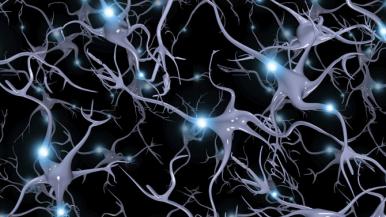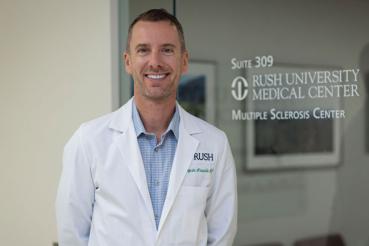While medications help control seizures in many people with epilepsy, approximately 30 to 40 percent have what is known as intractable epilepsy and find no relief from drugs.
“At one point, we thought medications would be the whole solution to epilepsy, but we now know that’s not the case,” says Michael C. Smith, MD, director of the Rush Epilepsy Center. “Medications are just part of the equation.”
Developing options for hard-to-treat seizures
For some people, surgery to remove the seizure focus — the spot of damage in the brain where your seizures originate — is an option.
But for others, the risks of surgery far outweigh the benefits. If your seizures arise from multiple areas of the brain or from especially eloquent areas, like the parts of the brain that control speech and movement, surgery could seriously impair important functions.
The good news is that today, there are several treatments for people with drug-resistant epilepsy who are not good candidates for surgery.
“Even if your medication regimen has reduced your seizures so now you’re only having one seizure a month, or one every six months, you don’t have to accept that as your new normal,” says Rush epileptologist Maggie McNulty, MD. “If you are not seizure free, you should definitely see a specialist, because there are always options.”
And Rush has been a leader in bringing these innovative options to patients, including the following:
Electrical stimulators, or neuromodulators
There are three types of electrical stimulation devices currently available and FDA approved that work in different ways to help reduce seizure burden.
Vagus nerve stimulation (VNS)
Rush was the first in Chicago to offer epilepsy patients the vagal nerve stimulator. The device is surgically placed under the skin on your chest. It is attached, using a thin wire, to the left vagus nerve (there are two vagus nerves, one on your right side and one on your left).
Once implanted, the device sends regular electrical pulses — according to your specific needs — via the vagus nerve to your brain stem. These pulses stimulate your brain stem to send signals to certain areas of your brain to prevent seizures from occurring.
The stimulator’s settings can be changed by your physician as needed via a special wand, with no additional surgery needed.
Deep brain stimulation (DBS)
With deep brain stimulation (DBS), a neurosurgeon implants electrodes in targeted areas within your brain. These electrodes are connected to a neurostimulator that is implanted under your skin, below your collarbone. The device sends electrical impulses directly to the electrodes to modify the electrical activity that is causing your seizures.
DBS is approved by the FDA for use in patients whose epilepsy does not respond to medication and who are not candidates for resective epilepsy surgery. The Rush epilepsy team was part of the clinical trials that led to the FDA approval of DBS to treat epilepsy.
Responsive Neurostimulation System (RNS)
Rush was the first to combine the FDA-approved neurostimulator called the RNS system (also referred to as NeuroPace) with a mapping method and brain activity tracking technology developed at the Medical Center.
A neurosurgeon places the device beneath the scalp, with electrodes leading to seizure-causing areas of the brain. The implanted device continuously monitors your brain’s electrical activity and detects abnormal activity; it then delivers small electrical pulses, when abnormal activity is detected to help improve seizure control over time.
If you are not seizure free, you should definitely see a specialist, because there are always options.
The RNS can record patients’ brain activity 24/7 and show where seizures are originating. In some cases, the RNS can be a bridge to surgical resection and improved seizure freedom outcomes.
“With all three of these neuromodulators, the longer you have the device, the better your seizures are controlled, though they typically do not help you become seizure-free,” Smith says. For instance, DBS and RNS have been shown to decrease seizures by 70% over a four to five year period.
Ablation therapy
Ablation is used to target specific areas in the brain that are responsible for seizures, most often when MRI scan reveals a scar on the brain (as in mesial temporal sclerosis). Although it’s a type of surgery, it’s far less invasive than open brain surgery, requiring only a small hole in your skin that is easily stitched and typically patients are discharged home the next day.
With laser interstitial thermal therapy (LITT), your neurosurgeon uses a laser catheter with a heated tip to ablate — or destroy — the area that’s causing your seizures. “It enables pinpoint accuracy and it offers a good chance for you to become seizure-free. In some cases, it offers a cure,” Smith says.
Based on the success of LITT, neurosurgeons at Rush may soon begin exploring the use of another type of ablative therapy: focused ultrasound.
Currently FDA approved and offered at Rush for treatment of essential tremor and parkinsonian tremor, focused ultrasound uses sound waves — instead of the heat used for LITT — to generate a lesion in a specific area of the brain and create a therapeutic effect. Focused ultrasound is a one-time treatment that does not require any incisions and provides dramatic and immediate tremor relief. The hope is that it may ultimately prove effective for seizure control as well.
“Focused ultrasound is not yet FDA approved for epilepsy, and it’s still a relatively new treatment, so we don’t yet have the data to say whether it’s a viable approach for seizure control,” Smith explains. “But we believe focused ultrasound has great promise based on both the outcomes we’ve seen in tremor patients and the effectiveness of LITT in people with epilepsy.”
Anti-seizure dietary approaches
Dietary approaches have been shown to make seizures less frequent and improve quality of life in many people with epilepsy.
Rush is one of only a few centers in the U.S. — and was the first in Illinois — to offer a dietary clinic for adults with epilepsy. At the clinic, a dietitian and epileptologist counsel patients on use of the ketogenic diet (or, keto diet), modified Atkins diet or low glycemic diet to help control seizures.
The keto and Atkins diets emphasize higher protein and fat intake, and minimal carbohydrates. A low glycemic index diet also monitors your total carbohydrates, but instead focuses on carbohydrates that have a low glycemic index. Glycemic index refers to the amount by which the food raises your blood glucose after eating.
“The team personalizes a diet plan for you, taking into account your unique needs,” says McNulty. “Not everyone can be as strict about carb restriction, for instance. But we know that any sort of modification of your diet into a lower-carb state may help improve seizures, so the team helps create a plan that you can follow.”
Psychosocial support
Whether you’re taking medications or receiving another treatment, you may need additional support to cope with epilepsy. That’s why the Rush Epilepsy Center also helps to address the psychosocial effects — including the impact epilepsy can have on your mental health, emotional well-being, family, relationships, education and employment.
For example, team members help patients with stress reduction. “Stress and anxiety can both trigger seizures and contribute to lack of sleep, which is also a seizure trigger for many people,” McNulty says. “So it’s important for people with epilepsy to identify effective ways to de-stress and ease anxiety, such as meditation and mindfulness.”
The center also has a psychiatrist and social workers who specialize in working with patients and families affected by epilepsy.
“It’s all part of our approach of treating the whole person,” Smith says, “not just the disease.”




